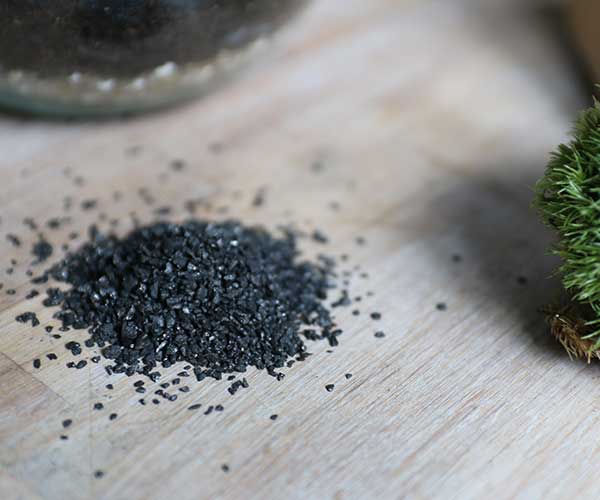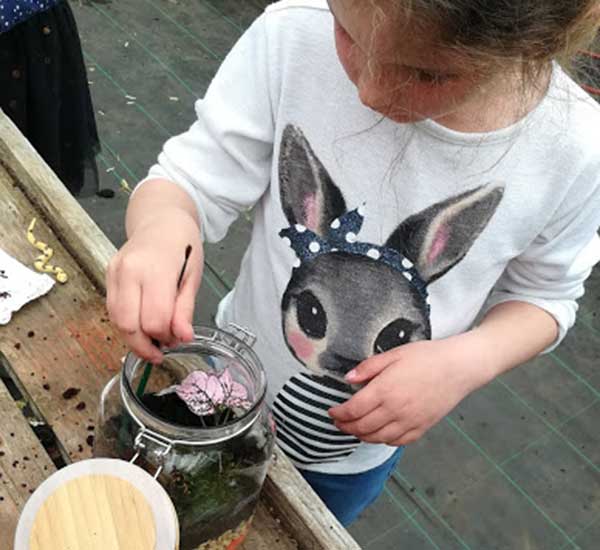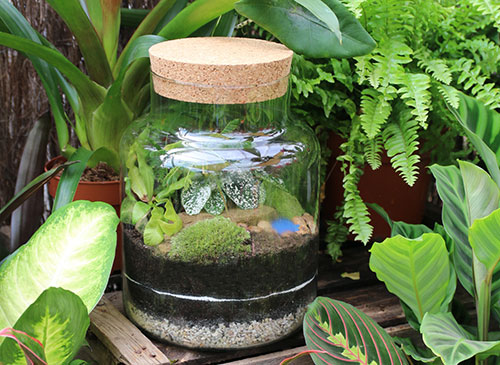
TERRARIUM ELEMENTS: Soil & Layering Tricks
The soil is a pretty important part of your terrarium as it’s what your plants need to thrive on for many years to come. Although you certainly don’t need loads of soil, ensuring it is good quality will really benefit the overall health of your terrarium.
Types of Soil
There are hundreds and hundreds of soil types available to buy online which can be absolutely baffling to those simply looking to buy a litre or two for one small terrarium (hence why I sell it in my shop in small quantities!). But don’t be scared off – for closed terrariums all you really need is a decent soil aimed at houseplants and for open terrariums a soil aimed at cacti and/or succulents.
But what is the difference?
- Normal, houseplant soil looks and feels like soil you would find in your garden, just a little cleaner and finer. This type of soil when mixed with water becomes mud, and provides everything plants need to survive. It’s PH balance is usually good, it contains no pathogens or seeds that could contaminate your terrarium and has the correct structure for root systems.

- A soil aimed at cacti and succulents is much lighter, and usually mixed with what’s known as an aerator material such as perlite, pumice or sand. The addition of these materials to the soil allows more drainage to take place, which is what cacti and succulents need as they hate to be overwatered.

For an open terrarium, you’ll need a normal houseplant soil. For an open terrarium you’ll need the lighter, cacti and succulent option.
I could go on and on about the different soil types (perhaps a subject for a later blog post!) but for now that is the basic differences and which one is suited to the 2 different types of terrarium. The great thing is, both are relatively easy to get hold of, I sell small amounts in my shop or you can buy larger bags from other online retailers.
Adding Activated Charcoal
You will at some point need to add in activated charcoal to your terrarium. This toxin-reducing material has huge benefits for the overall health of your terrarium – you can read more about it and why it’s needed HERE. Adding it is simple, either mix into the soil that you decide to use, or create a layer of it under the soil. You can read more about this below.
Layering Soil Onto Gravel
Putting soil into a terrarium is one of the messiest jobs during the creation of these gardens under glass, particularly in vessels with narrow necks. You will need some patience, and most likely a funnel for slim necked glassware such as demijohns.
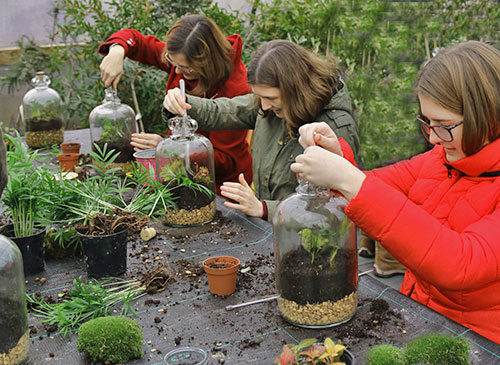
Creating terrariums during one of my workshops
By the time you come to putting in the soil you should have already put in the false bottom, a layer of grit, gravel or sand, to allow for drainage. You may be happy to just layer in the soil on the top, but if you do this, beware that the soil will sink into the gaps of the gravel pieces and you won’t get a clean line between the two layers. The plants really don’t care much about this! But if you are going to display your terrarium proudly at home, you may want it to look as neat as possible.
A simple way to prevent this from happening is to place a thin piece of mesh on top of the false bottom before putting in the soil. This mesh must have holes small enough to prevent soil leaking through, but holes big enough to allow water to drain through too. I have found that fibreglass mesh – most often used to make screens to protect from insects – is the best option. You can buy it in my shop. It can easily be cut to size (again, this takes patience but is achievable!) and has a good amount of flexibility.
Once you have your mesh in place, start putting in the soil. The amount of soil will of course depend on the size of your vessel – but generally a couple of inches minimum is what is needed to keep your plants happy. Remember – you need to allow enough room for the plants to be put inside AND allow room for growth, so don’t overfill!
Fun Layers of Sand & Other Substrate
For a natural finish to your terrarium, you will likely want to keep the soil simply as it comes. However, it has become somewhat of a trend to add in layers of other elements for aesthetic reasons, alongside some layers of materials which will help keep your plants happy. Now, I am a fan of the layers because I think they look ACE! Here’s a breakdown of the different layers you could add;
- Layers for a purpose include activated charcoal (as mentioned above), sphagnum moss or peat moss. These will help with drainage, root structure, minerals and more in closed terrariums. They can be layered in however you like, as long as the last (top) layer is soil. NOTE: Peat moss and sphagnum moss must not be added to open terrariums containing cacti and succulents as they retain too much water.
- Layers for aesthetic reasons are mostly made from craft or coloured sand. They are thin lines of sand added to the edges of the vessel which from the outside look fantastic. They provide little to no purpose but they do look good! Again, if you are adding these, ensure the final (top) layer is soil ready for your plants.
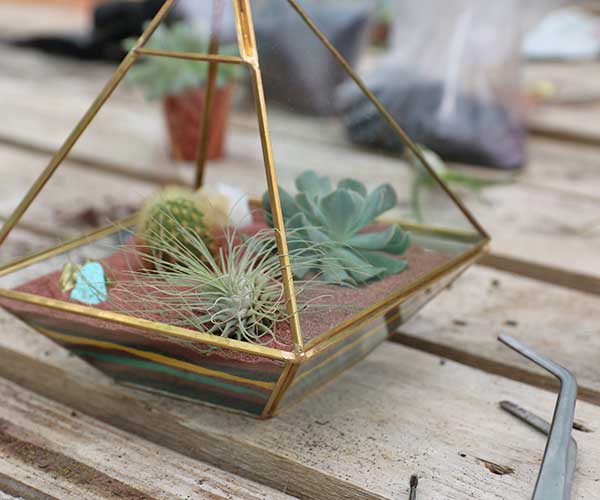
Layers of coloured sand in an open terrarium
Top Layer & Finishing
The top layer, or final layer, should always be soil once you have added the other elements you desire. This is now ready for plants to be added, and the decoration to begin!

